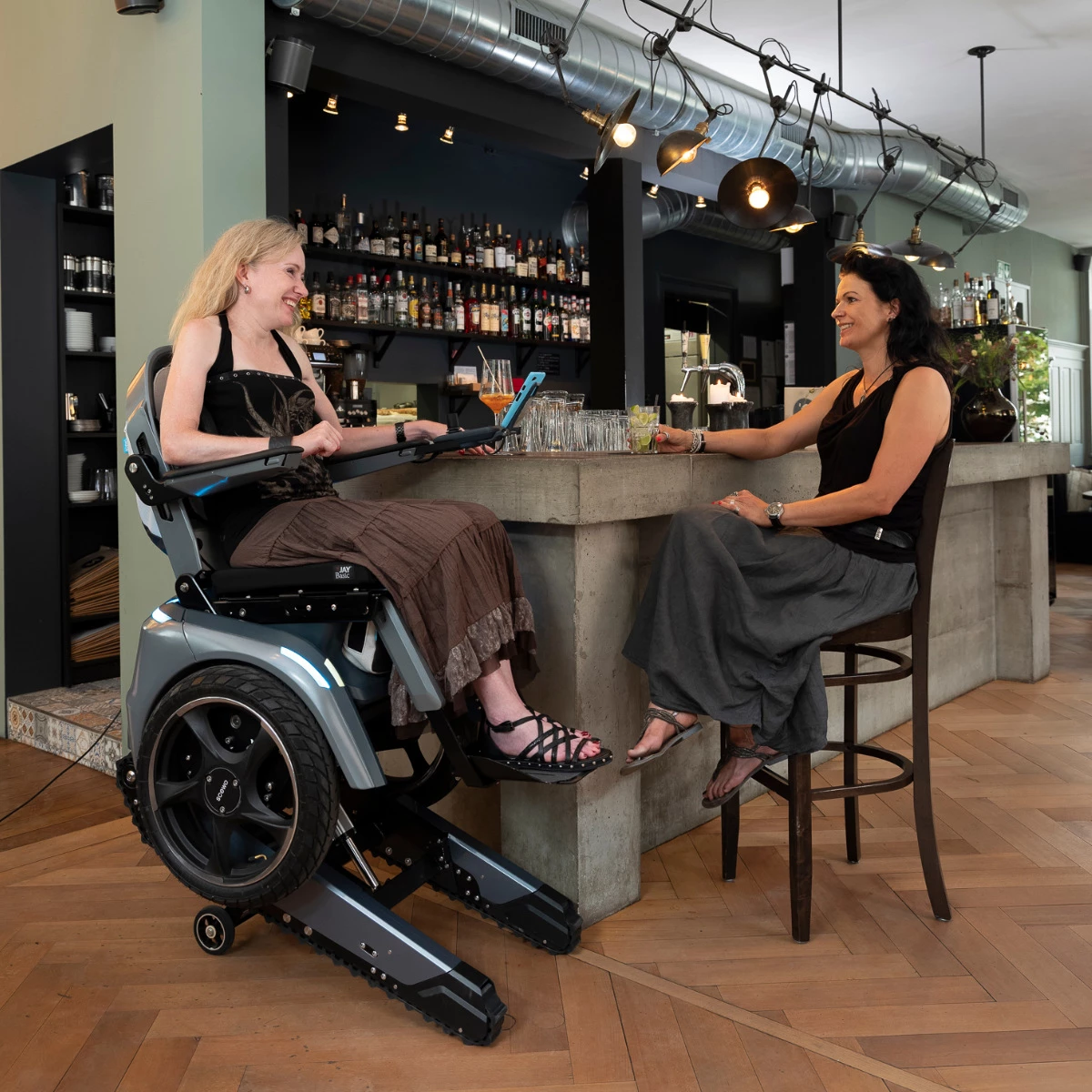The ultimate in assistive mobility, Scewo’s Bro is the only self-balancing wheelchair able to rise up and climb stairs. This two-wheeled personal electric vehicle is delightfully intuitive to maneuver, as I found out first-hand at this year’s CES.
In fact, it was the very first exhibit I went to when the show opened. I had no trouble finding the magenta-adorned Swiss Tech pavilion within Eureka Park – the international innovation bazaar tucked away in the basement of the Venetian Expo. And when I did, I made a beeline for the Scewo (“skeh-vo”) booth, where I was immediately greeted by Bernhard Winter, the company’s CEO & Co-Founder.
Interestingly, he and his fellow co-founders, Thomas Gemperle and Pascal Buholzer, happened upon the design somewhat by accident. “It’s actually a funny story," Winter shared with us on the way to the product demonstration. "We studied mechanical engineering and we wanted to build a robot that can go anywhere. And then we thought, ‘Why not put a seat on top? Then people can go everywhere.’ So we built it, We were actually astonished how little innovation there is in the wheelchair industry.”
Since back in 2017 when the trio was at university in Switzerland, the project has evolved. And now their team of 30 has brought this smart power wheelchair – officially, the Bro Series One – to market in Switzerland, Austria and Germany, with plans to launch in the U.S. in 2025. (No price has been set for the American iteration, but the European version currently sells for roughly US$39,000.)

Apart from the sense of freedom this ingenious chair imparts, what struck me most about it was how comfortable, fun and easy it was. The seat and seatback (among many settings) were both simple to angle and adjust to my liking. The app offered information about speed and the current mode, plus enabled control of the lights and the selection of such key settings as the joystick sensitivity.
With two large wheels, this torso-independent wheelchair can climb up to 30 steps per minute, each with a max height of 20 cm (7.9 in), at a gradient up to 36 degrees. At this point, it almost seems insulting to simply refer to this as a wheelchair. And it can overcome 5-cm (2-in) obstacles in the wild, in case you want to roll through a scenic forest or over other terrain with an uneven surface. If you’re at a store or in a social situation in which extra height would be handy or appropriate, the seat can rise from from 45 to 87 cm (17.7 to 34.2 in).
To climb steps, which have to be at least 76 cm (30 in) wide and can’t be a spiral staircase, you need to put the chair into climbing mode, which raises the seat. In my case, I backed up to the stairs, which automatically activated the backup camera view on the paired smartphone screen. Then I just pulled back on the joystick and climbed the few steps that happened to be nearby in the convention hall.
I felt confident and safe going up the stairs. I admittedly felt a little nervous twinge before descending the same few stairs frontwards, but that quickly dissipated once I was on my way. Honestly, my biggest mistake was doing this demo so early in the morning. Needless to say, I thought of the Bro’s smooth ride many times as I continued on to log a leg-wearying 18,419 steps by the end of that busy first CES day.
By comparison, the 162-kg (357-lb) Bro could’ve taken me 25 to 35 km (15 to 22 miles) at a rate up to 10 km/h (6 mph), depending on the battery installed. Of course, I happen to be blessed with the ability to walk. But for those who aren’t, this next-gen transport will be a godsend. As Winter relayed in an email, they named it with a brother in mind, “as a companion that accompanies you on your way and on whom you can always rely.” And with that in mind, it’s definitely a step in the right direction.
Product page: Scewo











